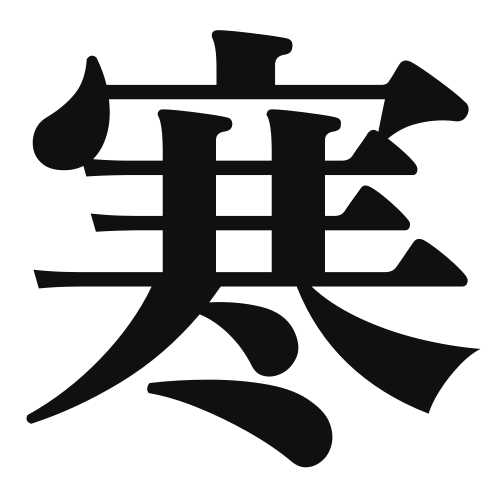1. Overview of Meaning
The kanji “寒” (kan) means “cold.” It is commonly used to describe low temperatures, chilly weather, or feelings of coldness.
2. Formation and Radical
Formation of the Kanji: The kanji “寒” is a phonetic-ideographic character (形声文字). It combines the radical for “ice” (氷) on the left, which indicates a relation to coldness, and the phonetic component “kan” (干) on the right, which contributes to its pronunciation.
Radical: The radical for “寒” is 氷 (ice), which signifies coldness and is often associated with winter or low temperatures.
3. Examples of Usage
Common Words and Phrases:
- 寒い (samui) – cold
- 寒さ (samusa) – coldness
- 寒冷 (kanrei) – cold climate
Example Sentences in Daily Conversation:
- 今日はとても寒いですね。 (Kyou wa totemo samui desu ne.) – It’s very cold today, isn’t it?
- 寒さに気をつけてください。 (Samusa ni ki o tsukete kudasai.) – Please be careful of the cold.
4. Synonyms and Antonyms
Similar Kanji:
- 冷 (rei) – cold (often used for things that are cold, like food or drinks)
- 凍 (tou) – frozen (indicating a lower temperature than cold)
Antonyms:
- 暖 (dan) – warm
- 熱 (netsu) – hot
5. Cultural and Historical Background
Relation to Japanese Culture: The concept of coldness is significant in Japanese culture, especially in relation to seasons and nature. Winter is often depicted in art and literature as a time of beauty and reflection.
Proverbs and Idioms:
- 寒い時期に暖かい心を持つ (Samui toki ni atatakai kokoro o motsu) – To have a warm heart in cold times, emphasizing kindness and warmth in difficult situations.
